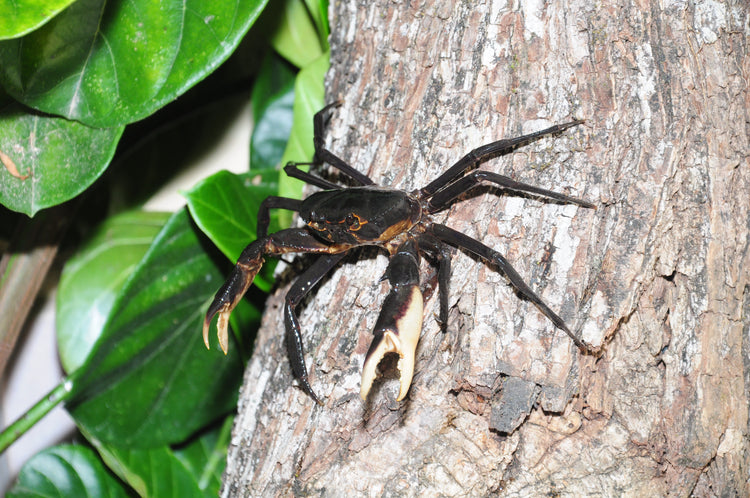This Newly Discovered Tree-Climbing Crab Is Kind Of Blowing Our Minds

Recently we wrote about a species of tree kangaroo that was thought to be extinct but has been officially rediscovered after 90 years. We’d never heard of anything like a kangaroo living in a tree and were blown away by the tree-dwelling marsupial. And now, something else unexpected has been found living in the trees.
When you think about crabs, you probably picture the crustacean living along coastlines and deep underwater. But a new species of crab, originally discovered by indigenous people in the Western Ghats of India and confirmed by research teams, spends its entire life living in the trees.
The crabs are spider-like and small, often able to fit in the palm of your hand. They live inside of tree-holes and camouflage themselves with a dark shell. This crab represents a new genus and species and is named Kani maranjandu after the Kani, a tribal community credited with first discovering the crabs in 2014. “Maranjandu” is the local term for “tree crab.”
The crabs don’t appear to be normal fresh-water land crabs that decided to give it a go in the trees. Their bodies are specially designed for life in the canopy. The crabs have long legs that curve sharply at the end, which are specially designed to cling to tree bark.
Like other crab species, they do require a good amount of water to survive. The crabs dwell inside of tree holes that have collected water. They leave their burrows to move up and down tree trunks in search of food. Because the crabs rarely venture out of the trees, their range is very limited. They can only be found in a limited, narrow area of the Western Ghats of India.
Scientists think that there may be other species of tree crab that also have limited ranges, which makes their discovery deep in the forests of India even more challenging.
Finding interesting animals like these living in trees underscores just how important protecting forests and planting trees really is. 80% of land animals rely on forests in some capacity to survive, whether living in the trees themselves or on the forest floor around them. This is one of many reasons why we plant 10 trees for each item purchased in our store.
Together, we can continue to protect and replant forests so that animals, like the tree crab, will have a home for years to come.

